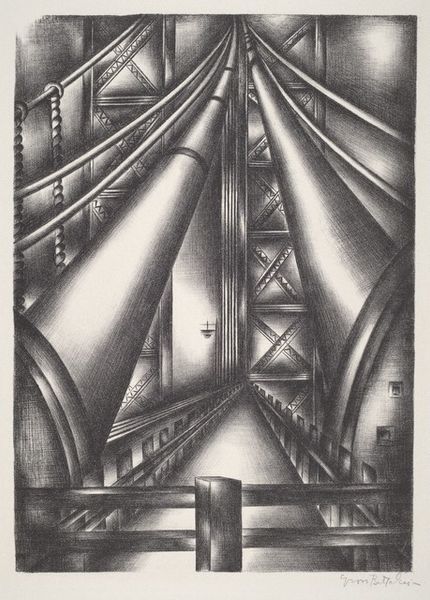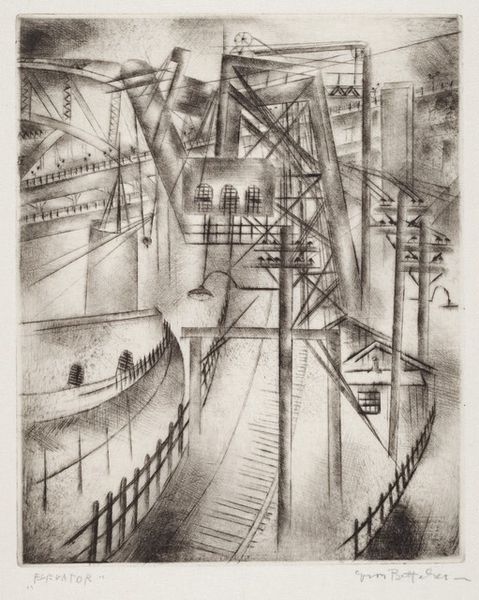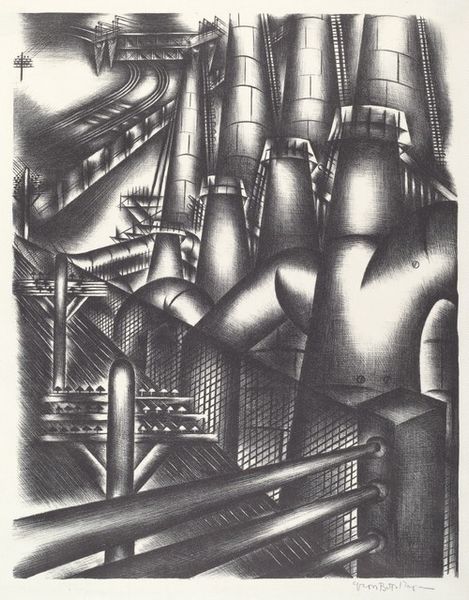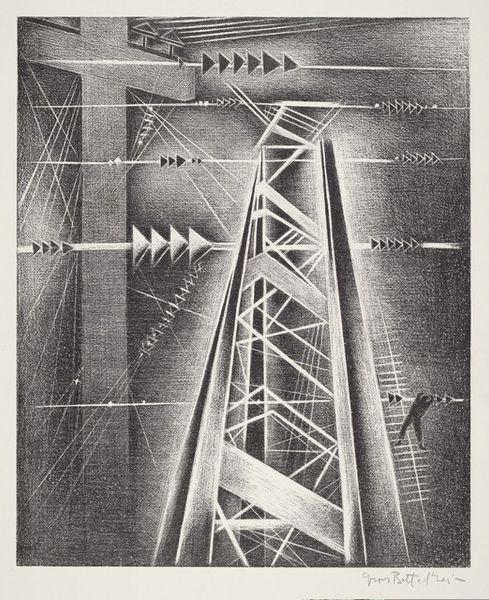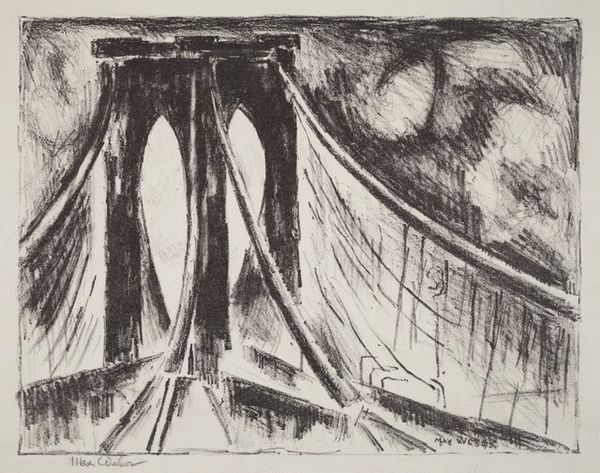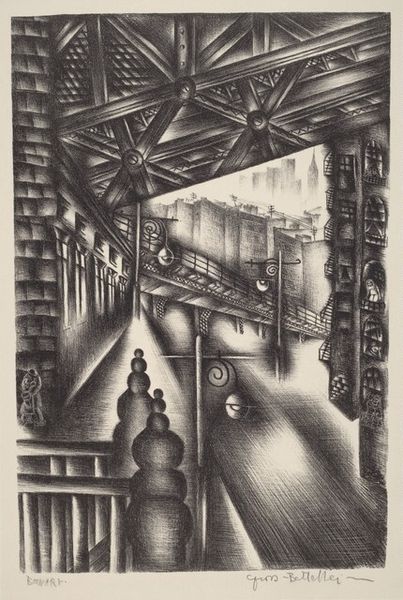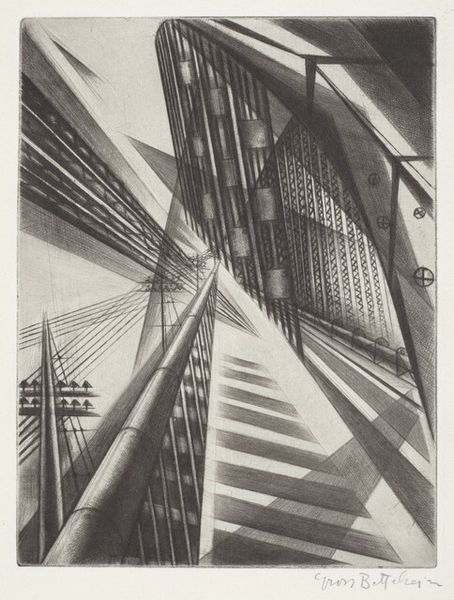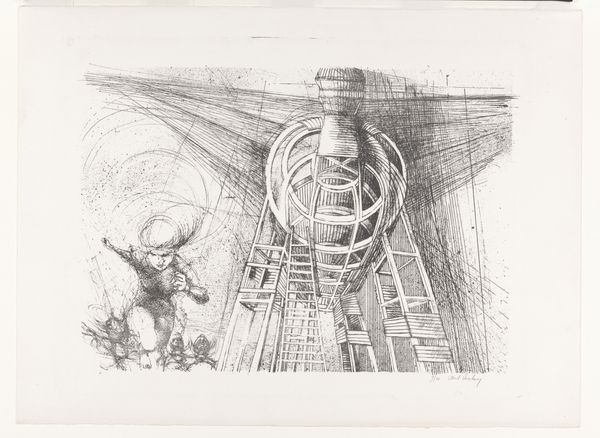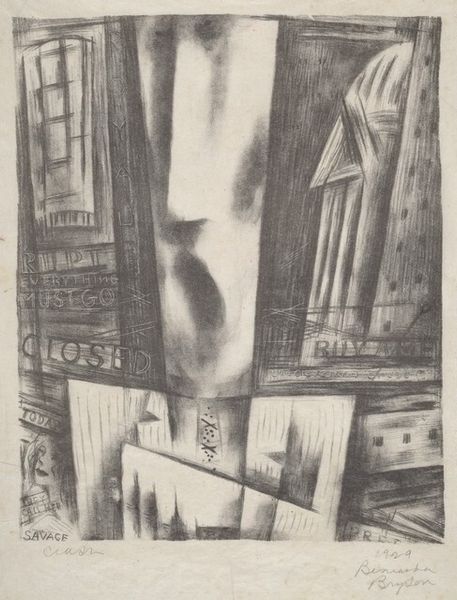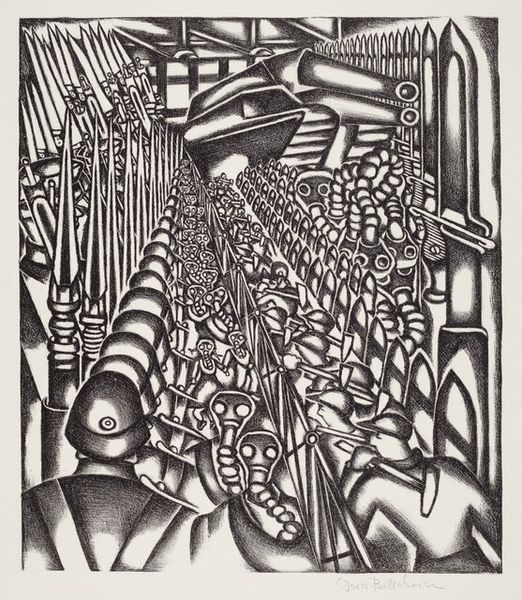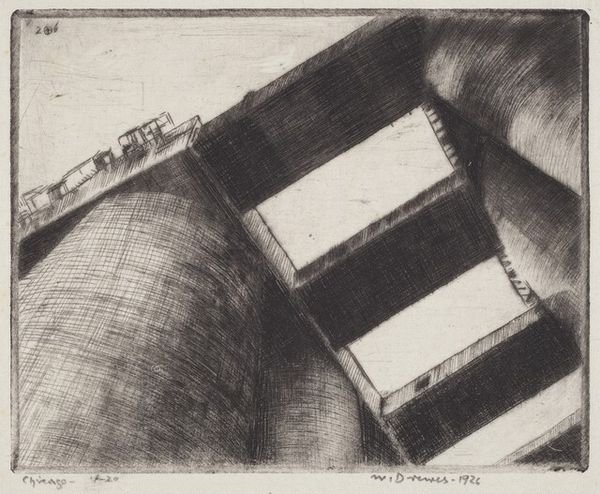
drawing, print, graphite
#
pencil drawn
#
drawing
# print
#
pencil sketch
#
pencil drawing
#
geometric
#
abstraction
#
graphite
#
cityscape
Dimensions: image: 35.8 × 26.2 cm (14 1/8 × 10 5/16 in.) sheet: 43.4 × 30.1 cm (17 1/16 × 11 7/8 in.)
Copyright: National Gallery of Art: CC0 1.0
Editor: Jolán Gross-Bettelheim's "Bridge Cables III," created around 1940, is a fascinating drawing, I think it's graphite on paper. There’s such a striking industrial feel. The way the lines converge gives a sense of immense depth. How would you interpret the piece in its historical context? Curator: Considering the social context, this image resonates with the rise of industrialization and urbanization in the early to mid-20th century. It mirrors the glorification, but also anxieties, associated with modern progress. The bridge itself is a potent symbol. What do bridges represent, historically and culturally? Editor: Connection, definitely. Overcoming obstacles, linking different communities… perhaps a kind of optimism about the future? Curator: Exactly! And in the 1940s, following the Depression and on the cusp of World War II, infrastructure projects became a very visible sign of economic recovery and national strength. However, there's also something isolating in this perspective. It reduces human experience to these stark, geometric forms. Editor: That makes sense. The coldness of the lines almost seems to suppress human interaction, doesn’t it? As if people are secondary to the structure itself. Curator: Precisely. Now, how might this tension reflect anxieties of that time, concerning the role of the individual in an increasingly mechanized world? Editor: I guess it presents progress as not necessarily universally positive, highlighting potential downsides to rapid change. Curator: A very astute observation. These social and cultural tensions become embedded within and reflected by artistic practice. It gives a fascinating lens to view this drawing through, thank you! Editor: Definitely! It reframed my view of the image as more complex than I originally saw.
Comments
No comments
Be the first to comment and join the conversation on the ultimate creative platform.
